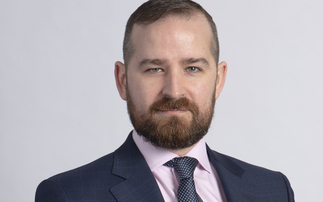Clark Fenton, head of the new Diversified Return Team at RWC Partners, explains the fund's strategy and how it aims to make money for investors in all market conditions.
How can your fund protect investors in a downturn?
The RWC Diversified Return Fund follows a credit cycle framework, which consists of four phases and sees the fund adapt its positioning based on market conditions, with the aim to make money in both downward and upward markets.
How does your fund's investment strategy allow it to adapt to different market conditions?
We adapt to different market conditions using our four-part credit cycle framework which guides the amount and kinds of risk we take. Based on our credit cycle framework, we are currently in the over-extended leverage phase. Risk premia are low, credit spreads are very tight, corporates have a lot of debt on balance sheets.
If trouble comes, it will be acutely felt. During this phase, we have very little market risk, a lot of liquidity and hedge positions, and instruments that will benefit from a liquidity crunch.
The phase that comes after is deleveraging; markets start to panic and there is a sell-off. We believe our hedge positions should do well in this environment.
The third phase is balance sheet repair, where a lot of the sell-off has already happened but investors are still nervous to add risk. We start to add a bit of risk here, especially carry, to generate some yield for the portfolio, and potentially take profits on our hedges.
The last phase is re-leveraging, where investors come back to markets. At this point we will have the most equity-like exposure, while remaining within our beta constraints.
Can you offer an example of a position in the fund aimed at protecting investors in a downturn?
One such position is being short of credit. Credit quality has gone down. BBB-rated bonds now make up the largest part of the corporate debt investment grade universe.
Spreads are really tight, and risks are high as seen, for example, in the very high proportion of covenant light loans, i.e. the loans without the usual stringent covenants.
At the same time, though, mainly due to investors' complacency the cost to be positioned for a downturn in credit is low. If credit spreads widen, it's very good news for us.
Also, at this stage in a cycle we generally aim to buy assets that will benefit from a liquidity crunch. This issue has come up recently with the Woodford saga and again with H2O. But these warning signals are appearing in the context of a bull market.
No investment strategy or risk management technique can guarantee returns or eliminate risks in any market environment.











